- Home
- Jackie French
Year in the Valley
Year in the Valley Read online
To Noël, who has shared most of the journey; to E & B;
to Val and the memory of Ned with love and gratitude;
and to Mothball, Rosie, Bruiser, Bounce and all the other
inhabitants, human and otherwise, of the valley
Table of Contents
Cover Page
Dedication
FOREWORD
SPRING
SUMMER
AUTUMN
WINTER
AFTERWORD
INDEX TO RECIPES
Copyright
About the Publisher
FOREWORD
Once upon a time I bought some land. I wanted to build a house, an orchard, a world of peace and plenty. It was the early 1970s, and sometimes I wore flowers in my hair though more often twigs and aphids, and jeans and work boots, instead of cheesecloth dresses.
The 1980s followed, the decade when self-indulgence was more important than ideals. But down in the valley the peach trees still bloomed, the wallabies munched the apricots. My son was born, my marriage broke up. My home was the machinery shed – the builder had delivered crumbling concrete for the house we’d planned. I lived by lantern light, washed the nappies by hand, went for walks in the dusk with my son and a kangaroo, and supported both of us by writing about the bush and fruit trees.
I met Bryan.
Bryan turned the shed into a house, with solar panels that really worked and a waterwheel to power it when it had rain instead of drought.
Now and then as my son grew older I kept a diary. And then he went to high school, coming home at weekends and holidays. I missed him. I missed the life structured around our journeys through the peach trees to the bus stop. So I turned the diary into this book. The words that follow celebrate part of my life that had already vanished…And now, years later, I’ve added some of what came next.
Jackie French
Araluen Valley, September 2009
SPRING
September 2
It rained last night – soft rain, thick as silk. The grass on the hills was lichen green this morning as I drove E through the orchards down to the school bus.
‘Mum, Mum, look at the spider webs!’ he yelled, sticking his head out through the open window into air so fresh it seemed to vacuum out your nasal passages.
The spider webs were silver; they hung from old barbed wire and dripped between the bare peach branches. You could almost see the gum trees photosynthesising. Mornings after rain have their own strange light; it’s as though the leaves have edges of quartz catching the sun.
I came back into a kitchen that smelled of toasted bun and boiled eggs; good smells, but rain-fresh air is a novelty at the moment, so even though it’s chilly I propped the kitchen door open.
Bryan looked up from his toast. He has the same toast every morning: Matt’s bread from the bakery in town and grilled to just pale brown, then spread with plum or apricot jam or blackberry jelly (he doesn’t like the pips in blackberry jam) or lime butter, depending on the season, or marmalade if someone has given us some in exchange for fruit. (We give away so much fruit that we’re always getting marmalade in exchange; it’s been years since I’ve made any.)
‘How much rain did we get?’ I asked.
‘Eight millimetres. I haven’t emptied the gauge yet.’
I wish there had been more. Eight millimetres is enough to dampen the first inch of soil and send up green shoots, but not enough for water to seep into the creek or springs. But it’s hard to worry about drought when the air smells damp.
This is the exciting time in the valley – not the peach picking (which is hot and furry and exhausting), not the first blossom (which always looks slightly out of place among the frost-scarred hills) but now – when the flowers are falling, petals like pink rain gusting across the road as you drive down the valley, fluttering down into our vegetable garden and into crevices in the bark, petal drifts so thick you could put your tongue out and catch one – but it’d feel clammy probably, a sort of pungent slice of Wettex, nothing like the magic in the air. And under the petals the peaches are swelling, furry nuts that grow bigger every day.
Maybe this is why I’ve sat down at my computer (having got E down to the school bus, with both shoes and homework and signed permission note, had breakfast and a mooch up the hill with Bryan to watch the light pour down into the valley – the sun still comes late into the valley this time of year)…
So now, ignoring the lyrebirds scratching up the last of the primulas outside my window and shredding the going-to-seed broccoli down in the garden (I could go and yell at them but they just ignore me – they know I haven’t got the soul of a predator)…
So now I have decided to write about the weather and the people and the wombats in the valley…and peaches and all the things that go into growing peaches…but most of all about food and how it rules our year – because after all, what is life apart from food, and friends, and family and shelter, and daydreams and how to create them…
But food is the basis of it all, which most people forget nowadays. Your way of life is dependent on what you eat and the choices you make about your food. If you choose to work in an office from 9 a.m. till who knows when, you’ll live on food cooked by other people, or on what you can scavenge – after it’s been washed and then packaged under plastic – in a supermarket, under artificial light.
For most people food is something they buy, then cook. Or, more and more commonly, they buy and defrost or heat (cooking implies some level of transformation of raw, separate ingredients). Or they eat food prepared by a stranger’s hands among other strangers. The food most people eat is becoming more and more isolated – away from the hands that prepare it, the hands that grow it, the fingers that harvest it (but it’s usually machines that harvest now).
Here in the valley, food is part of our lives: we watch the trees bud and flower then fruit; we listen to the wombats snipping off the grass at 2 a.m. and leaving fat green droppings that feed the soil; we watch the wallabies sipping young wonga-vine like spaghetti and pruning the apple trees into ‘interesting’ shapes.
Food here is a matter of feeding scraps to the soil so it’s rich in organic matter and the beetles and earthworms and nematodes that live in the soil can eat from it too.
When I eat a peach here I remember the smell of the soil as I planted the tree (good soil really does taste chocolaty – it’s not just the fantasy of a chocaholic). I remember the February glare turning the leaf tops silver, the smell of peach across the orchard, the larder’s almost sickly scent after months of stored apples, the middle ones gone bad and their stickiness dripping across the floor as I race them out to the chooks’ bucket…
I could buy a peach in the supermarket and it would probably taste good – but not quite as good, as it’s been picked green and firm enough to travel, not sticky ripe from the tree (and sunlight does have a taste, it’s just that most of us have forgotten it) – but it wouldn’t have the memories. No matter how good the taste, it wouldn’t be as rich.
So that is why I’m writing this. A celebration, if you like, of the lives outside my window as I type: the lyrebirds and the broccoli, the peaches and the wombats…our lives here in the valley and the seasons of our food.
Dried Peach and Pine Nut Cakes
You can pretend these cakes are muffins and eat them for breakfast; in my youth we called today’s muffins ‘fairy cakes’ and ate them for afternoon tea. You can eat these for afternoon tea, too. Or for dessert – arrange them nicely with cream or ice cream and a scatter of fresh orange zest.
They keep well in a sealed tin, but are much more fragrant if eaten the same day.
(By the way, pine nuts are extraordinarily easy to grow. Just plant a Mexican or
Swiss stone pine and wait five to ten years. Be warned, both grow very big. In a decade or two you will have an enormous harvest and an enormous tree to cope with.)
1/2 cup butter or mixture of butter and canola oil
1/2 cup brown sugar
2 eggs
1 cup pine nuts, chopped and browned on a tray in the oven
OPTIONAL
1 cup currants
1 cup ground almonds
1/2 cup chopped dried peaches, soaked in 1/2 cup boiled water till cool
1 cup self-raising flour
1 teaspoon Grand Marnier or 2 teaspoons orange zest or both (why be half-hearted?)
1 dessertspoon marmalade
Preheat the oven to 200°C while you prepare the cake mixture.
Beat the sugar and butter. Add the eggs one at a time. Fold in everything including the Grand Marnier and zest but not the marmalade.
The mixture should flop down from the spoon just like a semi-liquid cowpat. If the mixture is too dry, add a little water or (better still) orange juice.
Place spoonfuls in paper patty cases or in a greased muffin tin. Bake for 20 to 25 minutes, or till each cake is browned on top and springs back when you press it lightly in the middle.
Remove from the oven.
While the cakes are still hot, quickly heat the marmalade to almost boiling and brush it over the tops of the cakes.
September 3
‘Eight-forty,’ said Bryan this morning, checking his watch as the sun brushed over the ridge.
The sun doesn’t touch us till 9.22 a.m. in midwinter. (Yes, exactly. Two minutes matters in the dead frost of winter.) Then as spring advances the sun creeps over the ridge earlier and earlier, and the air is sun gold instead of shadow green.
You can almost rub the air between your fingers in spring. It’s thicker. The sun seems brighter now, except when you turn your back on it. In spring the world turns colder as soon as your face is away from the light, a phenomenon you don’t get when the sun is more directly overhead.
Spring jumps out at you. You’re out walking and the air tastes cold and suddenly there’s a warm breeze above your head smelling of blossom and you look again and the leaf buds are swelling. E ran his finger over one this morning: ‘Will this be a peach?’
‘No, a leaf.’
‘How can you tell?’
So I showed him. He looked at the fruit buds with satisfaction; I think he was tempted to count them, but we were late for school and had to run to get down to the bus.
Yawning at breakfast. Might be all the pollen in the air (a slight allergic reaction that makes me sleepy) but more likely it’s just the noises of spring. The rats were dancing in the ceiling again last night. They always dance in spring.
The rats in the ceiling are mostly introduced black rats who practise their traditional ethnic European choreography at two o’clock in the morning with gumboots on.
The rats at ground level are native bush rats – softer and fluffier, and fewer in number. I think the black rats must drive them out. The bush rats don’t dance. They drop things – trying to break open apricot stones by dropping them from the bench. This doesn’t work and hasn’t in the dozen years they’ve been trying it, so perhaps they’re not after the apricot kernels inside after all but are merely playing soccer.
At 6.30 a.m. the shrike-thrush arrives. He comes every morning at dawn till well into blowfly season. (Blowflies also wake you early, but less pleasantly than thrushes.)
The shrike-thrush perches on the edge of the pergola and pecks the bedroom window, carolling at the top of his voice. By the time you’ve given up sleep and headed for the bathroom the sun angle has changed and he pops round there too, for a change of window, then round to the kitchen window for an hour or so’s pecking till the sun is higher and he retires.
Spring is the macho time. The lyrebirds are having one last deep-throated burst before they’re silent in the heat of summer (except on misty mornings when their song echoes up from the creek). The wonga pigeons are having booming competitions, half a dozen of them at different points across the valley, wonga-ing away as loudly as possible, not quite in sync so that you long to stand on the tallest casuarina and call out: ‘Okay boys, all together now at the stroke of the baton…’
Spring is also mating season. If the birds are blatant in spring (and the bees for that matter, spring cleaning out the annual slaughter of the drones; anyone who complains about industry ‘downsizing’ has never watched the ruthlessness of bees), echidnas are even worse.
‘Mum,’ said E yesterday. ‘There’s an echidna on the flat. Hey, Mum! There’s two echidnas on the flat.’ And then in a tone that meant he wanted this explained: ‘Mum, there’s three echidnas on the flat…’
‘Are they playing chase?’ he asked.
‘Not quite,’ I said.
A randy male echidna will trot for miles after a female. Sometimes you see four males in a row behind a sexy female, sniffing short-sightedly at her rear.
Snakes are discreet. A few amorous twinings and that’s that. You hardly know it happens with snakes, though there were a couple of browns down here who stayed coiled up together most of summer. I called them Troilus and Cressida, till Cressida (I think it was Cressida) tried to bite me in the chook house.
That was the end of Cressida.
Troilus still sunbakes at the scene of their passion. He likes eggs too but is less greedy than his mate, and too fat to bother about attacking anyone.
Goering the-gander-down-on-the-flat’s idea of romance is to hold Elizabeth’s head under the water till she submits. Male bowerbirds wait till their beloved is neck deep in an orange or kiwi fruit and strike while she’s too absorbed to notice.
Male bowerbirds can be romantic though. I planted 500 anemones this year and the bowerbirds picked every one of them – the flowers were borne off in the beaks of banditing Lotharios to decorate their bowers, while I’m left with the stalks.
Actually, I suspect that no matter how romantic a bowerbird looks flying across the garden with a daffodil in his beak, he’s really doing it to impress the other males. (A visiting martian might assume that human males drive low fast cars to impress their potential mates, but they don’t.) And come to think of it, bowerbirds eat flowers. A jonquil to a bowerbird may be the human equivalent of roast lamb or a box of chocolates – an edible display rather than an aesthetic one.
Lyrebirds sing about it for months before and after, but the actual event scarcely interrupts the melody.
Kangaroos box about it – you can catch them up on the hill above the apricots, every afternoon, sometimes sparring for so long the participants snooze between each stroke. Then the matter is over in seconds while the female scarcely breaks her chewing, unless the bastard bites her neck to get her in position. She just looks round with the kangaroo equivalent of ‘Get on with it, George.’
Wisbey’s bull broods about it for days then trots off three seconds later.
The most sexually preoccupied animal I ever met was Willy the Wanker.
Willy was a red-necked wallaby. Red-necks are a friendly sort of wallaby. They graze in groups about the hills – unlike the black-tails, who mostly feed alone, ducking under the thorn bushes if they’re startled and leaving their tails to poke out like black snakes taking the sun.
Willy’s pleasures, however, were solitary.
I remember one formal tea party with an elderly friend under the apricot tree. Tablecloth, Earl Grey and china cups – ‘More tea? More cake?’ – and Willy just behind her, absentmindedly masturbating while he sniffed the ripening apricots.
My friend must have noticed something in my face. Finally she turned. Just as Willy finished.
‘Why it’s a wallaby! How sweet! How long has he been there?’
‘Long enough,’ I said.
‘The darling. Here boy! Here boy! Have some cake? Nice wallaby.’
The nice wallaby wiped a paw on his stomach, bounded over and ate the cake. I was afraid for week
s he might see it as a Pavlovian reward, and perform whenever he felt the urge for cake. But he didn’t.
Wallabies use their paws not just for sex – Willy’s the only one I’ve ever seen who did – but for peeling mandarins and picking bread out of the chooks’ bucket and pulling wonga-vine from bushes. Kangaroos can use their tongues, the rare ones who use some finesse. Echidnas use their noses.
And as for humans – well, it’s spring and a joy to feel the air on bare skin again, the sun pouring through the bedroom doors soaking down into your bones after a winter huddling beneath the blankets. (I’ve packed my hot-water bottle back into the larder, and my long johns are on the washing line.)
September 4
Bryan opened the bedroom doors last night, the first time they’ve stayed open all night since the start of winter.
Suddenly the bedroom was full of the sound of frogs, the washing of the creek across the rocks (even as low as the creek is, the sound of water still laps through all other valley sounds), casuarina branches brushing their backs against the wind, Chocolate the wombat grunting on the grass, the squeak of the climbing rose against the roof. (One day I really will prune it, yes Bryan, I promise.)
The room was full of spring air, and we woke up this morning grinning at each other.
September 5
I realised last night you can smell moonlight – or maybe moonlight just lures you out of doors so you sniff: jasmine, jonquils, clematis, wonga-vine, elderflowers, wisteria, lime-blossom, violets, alyssum…spring…
I don’t think I have ever heard so many birds – not since last spring anyway. The shrike-thrush still yelling SUGareee! as it pecks at its reflection, the Lewin honeyeater’s deep chortle, the lyrebirds and the cheep of a hundred red-browed finches.
Even the kookaburras are calling. ‘You don’t realise they’ve been silent till you hear them again,’ said Bryan, out on the balcony yawning at the early morning. What with birds and sudden sunlight, we’re getting up half an hour earlier than last month.

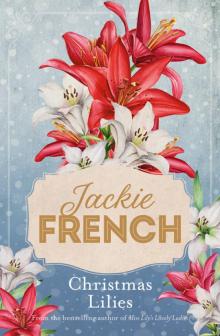 Christmas Lilies
Christmas Lilies The Lily in the Snow
The Lily in the Snow The Schoolmaster's Daughter
The Schoolmaster's Daughter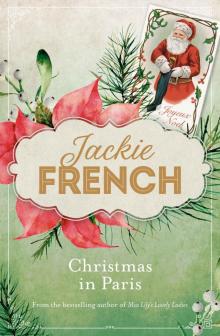 Christmas in Paris
Christmas in Paris Lilies, Lies and Love
Lilies, Lies and Love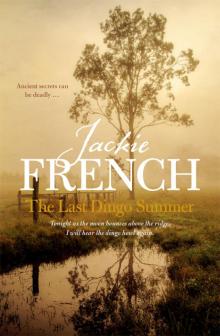 The Last Dingo Summer
The Last Dingo Summer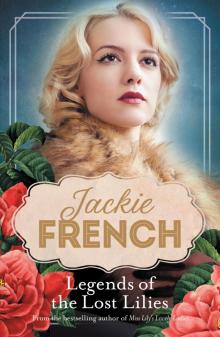 Legends of the Lost Lilies
Legends of the Lost Lilies Just a Girl
Just a Girl Pirate Boy of Sydney Town
Pirate Boy of Sydney Town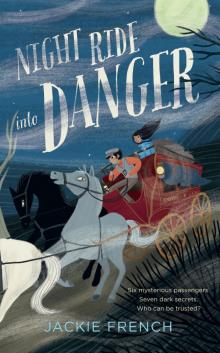 Night Ride into Danger
Night Ride into Danger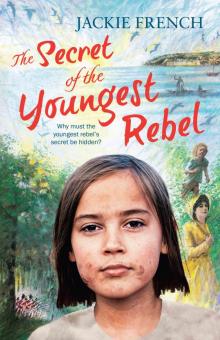 The Secret of the Youngest Rebel
The Secret of the Youngest Rebel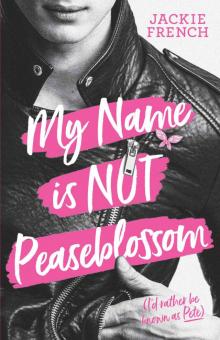 My Name is Not Peaseblossom
My Name is Not Peaseblossom Goodbye, Mr Hitler
Goodbye, Mr Hitler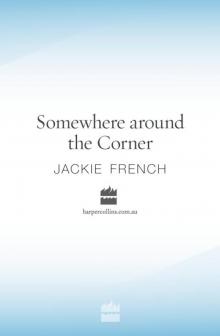 Somewhere around the Corner
Somewhere around the Corner Dingo: The Dog Who Conquered a Continent
Dingo: The Dog Who Conquered a Continent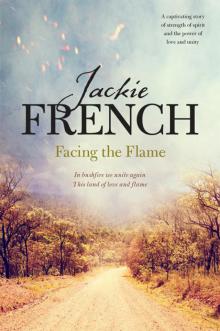 Facing the Flame
Facing the Flame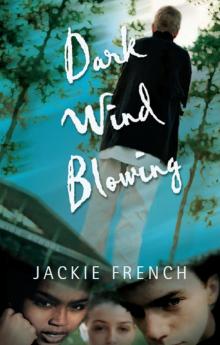 Dark Wind Blowing
Dark Wind Blowing Pennies For Hitler
Pennies For Hitler They Came On Viking Ships
They Came On Viking Ships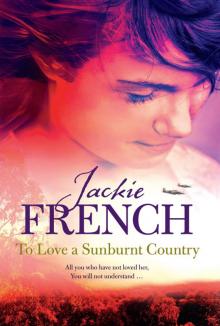 To Love a Sunburnt Country
To Love a Sunburnt Country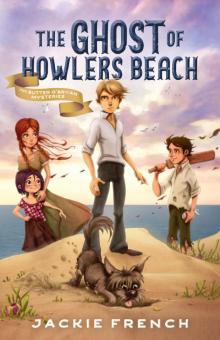 The Ghost of Howlers Beach
The Ghost of Howlers Beach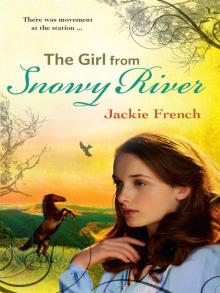 The Girl from Snowy River
The Girl from Snowy River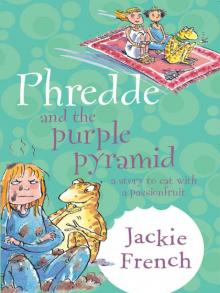 Phredde and the Purple Pyramid
Phredde and the Purple Pyramid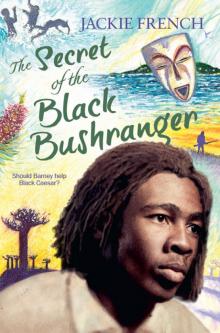 The Secret of the Black Bushranger
The Secret of the Black Bushranger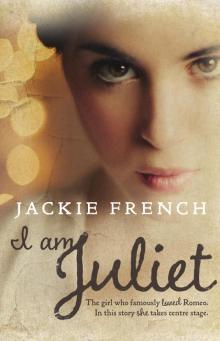 I Am Juliet
I Am Juliet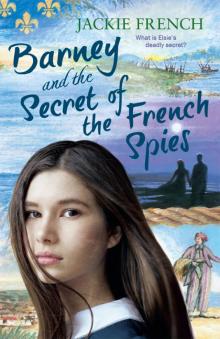 Barney and the Secret of the French Spies
Barney and the Secret of the French Spies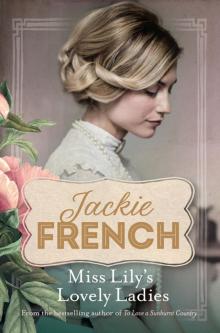 Miss Lily’s Lovely Ladies
Miss Lily’s Lovely Ladies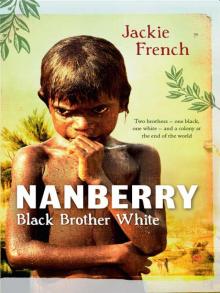 Nanberry
Nanberry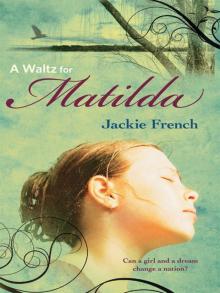 A Waltz for Matilda
A Waltz for Matilda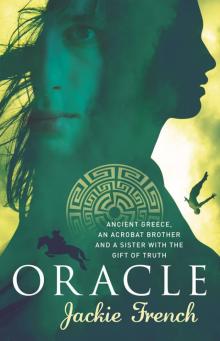 Oracle
Oracle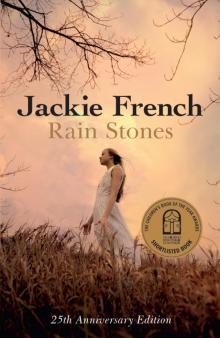 Rain Stones 25th Anniversary Edition
Rain Stones 25th Anniversary Edition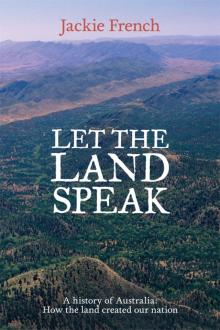 Let the Land Speak
Let the Land Speak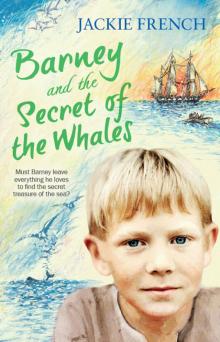 Barney and the Secret of the Whales
Barney and the Secret of the Whales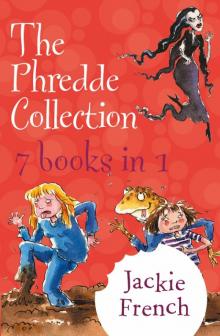 The Phredde Collection
The Phredde Collection Year in the Valley
Year in the Valley A Rose for the Anzac Boys
A Rose for the Anzac Boys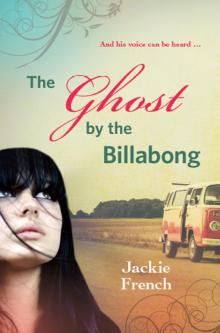 The Ghost by the Billabong
The Ghost by the Billabong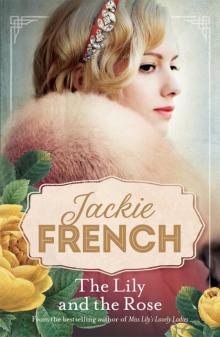 The Lily and the Rose
The Lily and the Rose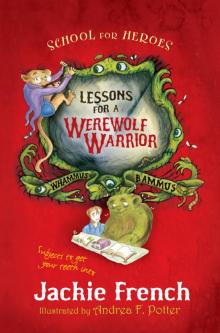 Lessons for a Werewolf Warrior
Lessons for a Werewolf Warrior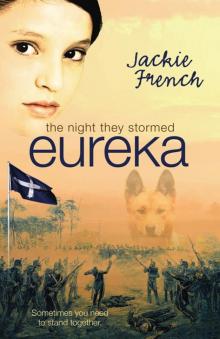 The Night They Stormed Eureka
The Night They Stormed Eureka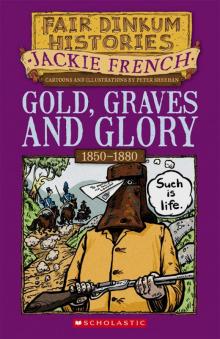 Gold graves and glory
Gold graves and glory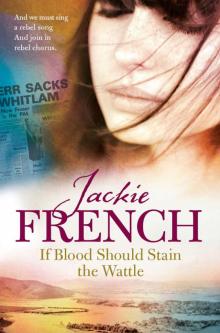 If Blood Should Stain the Wattle
If Blood Should Stain the Wattle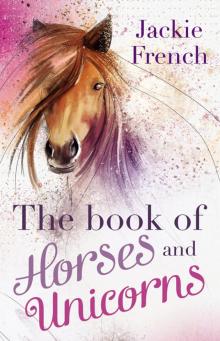 The Book of Horses and Unicorns
The Book of Horses and Unicorns Ophelia
Ophelia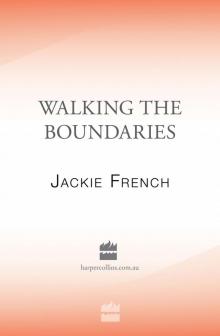 Walking the Boundaries
Walking the Boundaries Hitler's Daughter
Hitler's Daughter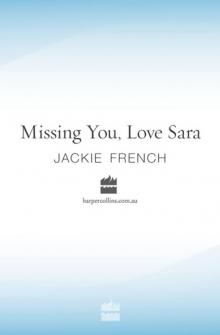 Missing You, Love Sara
Missing You, Love Sara Macbeth and Son
Macbeth and Son Wonderfully Wacky Families
Wonderfully Wacky Families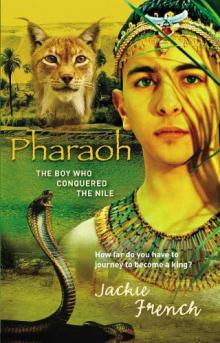 Pharaoh
Pharaoh Dance of the Deadly Dinosaurs
Dance of the Deadly Dinosaurs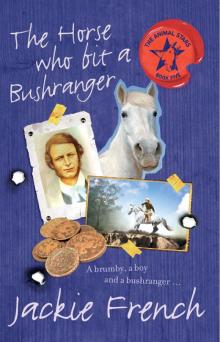 The Horse Who Bit a Bushranger
The Horse Who Bit a Bushranger One Big Wacky Family
One Big Wacky Family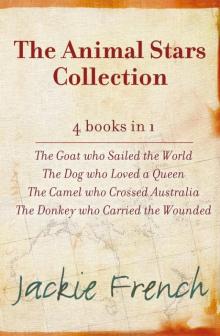 The Animal Stars Collection
The Animal Stars Collection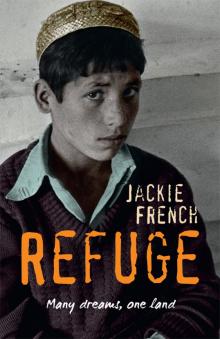 Refuge
Refuge Third Witch
Third Witch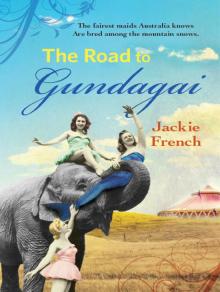 Down the Road to Gundagai
Down the Road to Gundagai